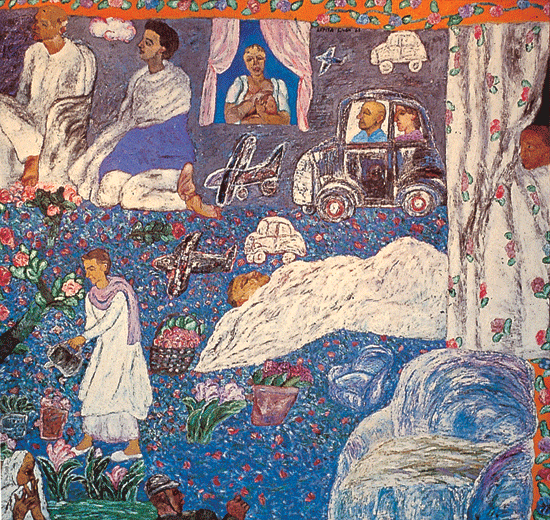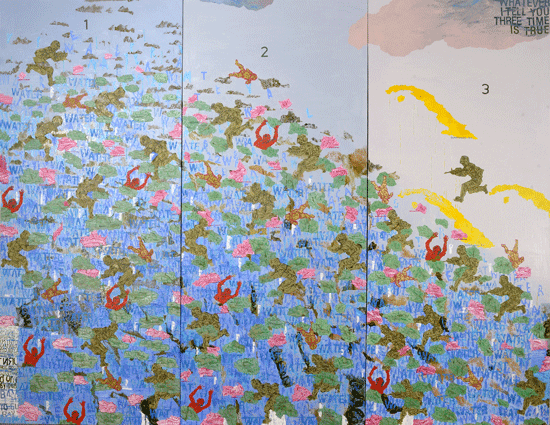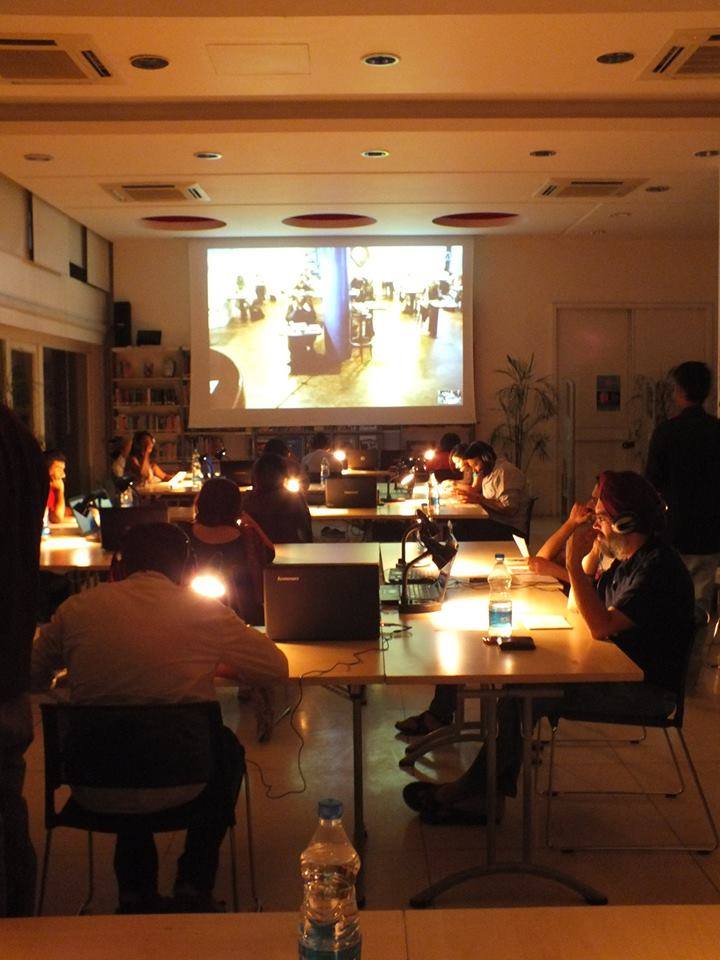Other Narratives/ Other Structures: Selected works by Arpita Singh, on view at the Lalit Kala Akademi, is well worth one visit, if not more. Hosted in collaboration with Vadehra Art Gallery and curated by Ella Dutta, the exhibition features works from private collections dating back to the 1970s. Opening with brief introductions of both the artist and the curator, a timeline of landmark moments guides the viewer through political events and personal happenings in Singh's life that visibly resonate in her work.
These and whatever she draws from miniature painting traditions, mythologies, textiles, folk art and art history make for a rather extensive art vocabulary that is well articulated in triptychs like The Lily Pond, From Time to Time and Whatever is Here.
Born in the late 1930s, Arpita Singh has witnessed many events that affected her geopolitical surroundings, most profound of which were widespread human displacements. The theme of migration has been recurrent in her work, although she assigns this to her interest in ancient history and the transmission of languages, micro cultures, values and codes of conduct, whether filtered through generations or carried by those seeking new habitats.


What struck me upon entering the exhibition space were the sheer number of works and vibrancy of colour. Singh's art is recognisable for its strong emotional quotient, repetition of motifs, use of letters and numbers that are often stenciled, and incessant mappings. These and whatever she draws from miniature painting traditions, mythologies, textiles, folk art and art history make for a rather extensive art vocabulary that is well articulated in triptychs like The Lily Pond, From Time to Time and Whatever is Here. While the first, inspired by a newspaper headline rehashes Monet's charming lilies into an episode of turmoil as a way of resisting turning the world into Guantanamo Bay, Whatever is Here, inspired by the Mahabharata, is a chart of real and imagined landscapes, plotted with figures and loaded with suggestions of moral duty. Singh also strongly identifies with her feminine side and the domestic roles she performs thereof. This is particularly noticeable in works like Munna Apa's Garden, while others like Buy Two, Get Two Free is also a comment on the effects of growing consumerism.
Often described as being dream-like compositions, I see her works as multi-layered, in terms of both painted technique as well as subject material. The tact with which she handles her subjects reflects a universality that negates restrictions of temporality. Her watercolours are more poignant and sombre, her oils thick and harder-hitting, and her etchings and sketches lean toward abstraction. She is nevertheless, a narrative painter. If I were to read the titles of her works, I'd imagine them to be short stories — The Listeners, The Golden Deer, The Winter Walk or The Cornflower Bed. And strangely enough, each reads as though it were so.
The exhibition unfolds as a compilation of the artist's work through five decades with a few early pieces — still evolving into the art language we know as hers, and some others having never been publically displayed. It is a mélange of diverse elements, just as each of Arpita Singh's painted surfaces is, and is thus, a unique treat for the senses.







